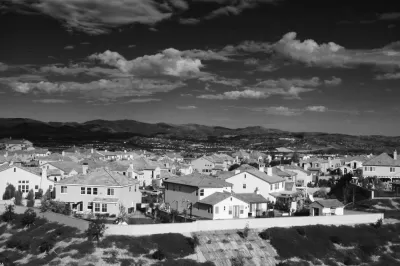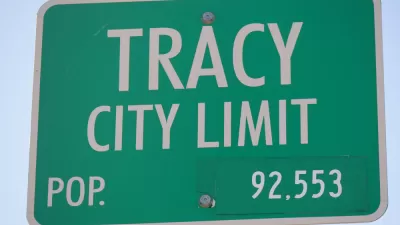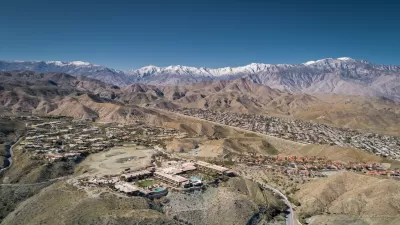It's been a while since 2008, and a new crop of homeowners is colonizing the far-flung exurbs. Mostly foreclosed and even abandoned last time around, the exurbs are still a risky buy.

Written off (sometimes literally) after the Great Recession, the exurbs are back. Buyers' motives are largely the same: extreme prices and scarce options closer to the urban core. The situation is particularly outlandish in the Bay Area: "Buying was impossible: The median price is almost $1 million. In Mountain House, about 55 miles east in the San Joaquin Valley, [homes sell for] for less than half that."
Thankfully, the commuters of the exurban diaspora featured in this article can take the train to work. "If we had to drive we wouldn't last," one of them remarked.
Without viable housing options closer in, young people with families often consider settling down far, far away. "The push to the outskirts is being fueled by the more than 4 million new jobs created since 2013, historically low mortgage rates and a population bulge of millennials settling down."
With 2008 in mind, experts doubt whether that decision could ever be wise. "The exurbs' comeback is precarious because they're attractive to buyers who 'could be more sensitive to mortgage-rate increases,' said Megan McGrath, an analyst with MKM Holdings. 'The longer-term risk is that it's a more vulnerable land position to hold ahead of the next housing downturn.'"
FULL STORY: Dead U.S. Exurbs Are Staging Comebacks

Study: Maui’s Plan to Convert Vacation Rentals to Long-Term Housing Could Cause Nearly $1 Billion Economic Loss
The plan would reduce visitor accommodation by 25,% resulting in 1,900 jobs lost.

North Texas Transit Leaders Tout Benefits of TOD for Growing Region
At a summit focused on transit-oriented development, policymakers discussed how North Texas’ expanded light rail system can serve as a tool for economic growth.

Why Should We Subsidize Public Transportation?
Many public transit agencies face financial stress due to rising costs, declining fare revenue, and declining subsidies. Transit advocates must provide a strong business case for increasing public transit funding.

How to Make US Trains Faster
Changes to boarding platforms and a switch to electric trains could improve U.S. passenger rail service without the added cost of high-speed rail.

Columbia’s Revitalized ‘Loop’ Is a Hub for Local Entrepreneurs
A focus on small businesses is helping a commercial corridor in Columbia, Missouri thrive.

Invasive Insect Threatens Minnesota’s Ash Forests
The Emerald Ash Borer is a rapidly spreading invasive pest threatening Minnesota’s ash trees, and homeowners are encouraged to plant diverse replacement species, avoid moving ash firewood, and monitor for signs of infestation.
Urban Design for Planners 1: Software Tools
This six-course series explores essential urban design concepts using open source software and equips planners with the tools they need to participate fully in the urban design process.
Planning for Universal Design
Learn the tools for implementing Universal Design in planning regulations.
City of Santa Clarita
Ascent Environmental
Institute for Housing and Urban Development Studies (IHS)
City of Grandview
Harvard GSD Executive Education
Toledo-Lucas County Plan Commissions
Salt Lake City
NYU Wagner Graduate School of Public Service




























